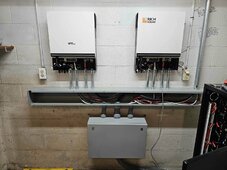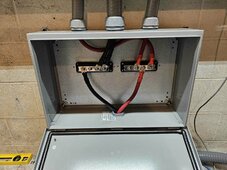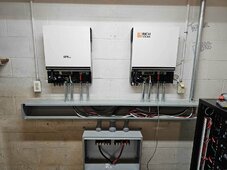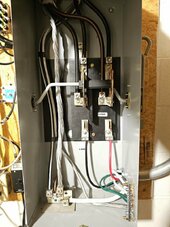My home has a 400A service with two main panels:
I'm running two LV6548 inverters in split phase, so far I have 4 of the EG4 48v 5kw batteries, I plan to expand that up to 6 batteries over time.
I've finished the battery and inverter setup, and it works great. Now I need to get the mount and solar panels up (14, 390w panels). Here's some progress pics, feel free to critique or point out changes/safety issues!
Special thanks to @timselectric and @ricardocello for answering many questions in DMs






- Left panel: Heavy loads, always on grid power
- Right panel: Household loads, fed by a manual transfer switch
- Transfer Switch Up position: Grid power on right main panel
- Transfer Switch Down position: Inverter power (solar/battery) to right main panel
I'm running two LV6548 inverters in split phase, so far I have 4 of the EG4 48v 5kw batteries, I plan to expand that up to 6 batteries over time.
I've finished the battery and inverter setup, and it works great. Now I need to get the mount and solar panels up (14, 390w panels). Here's some progress pics, feel free to critique or point out changes/safety issues!
Special thanks to @timselectric and @ricardocello for answering many questions in DMs








